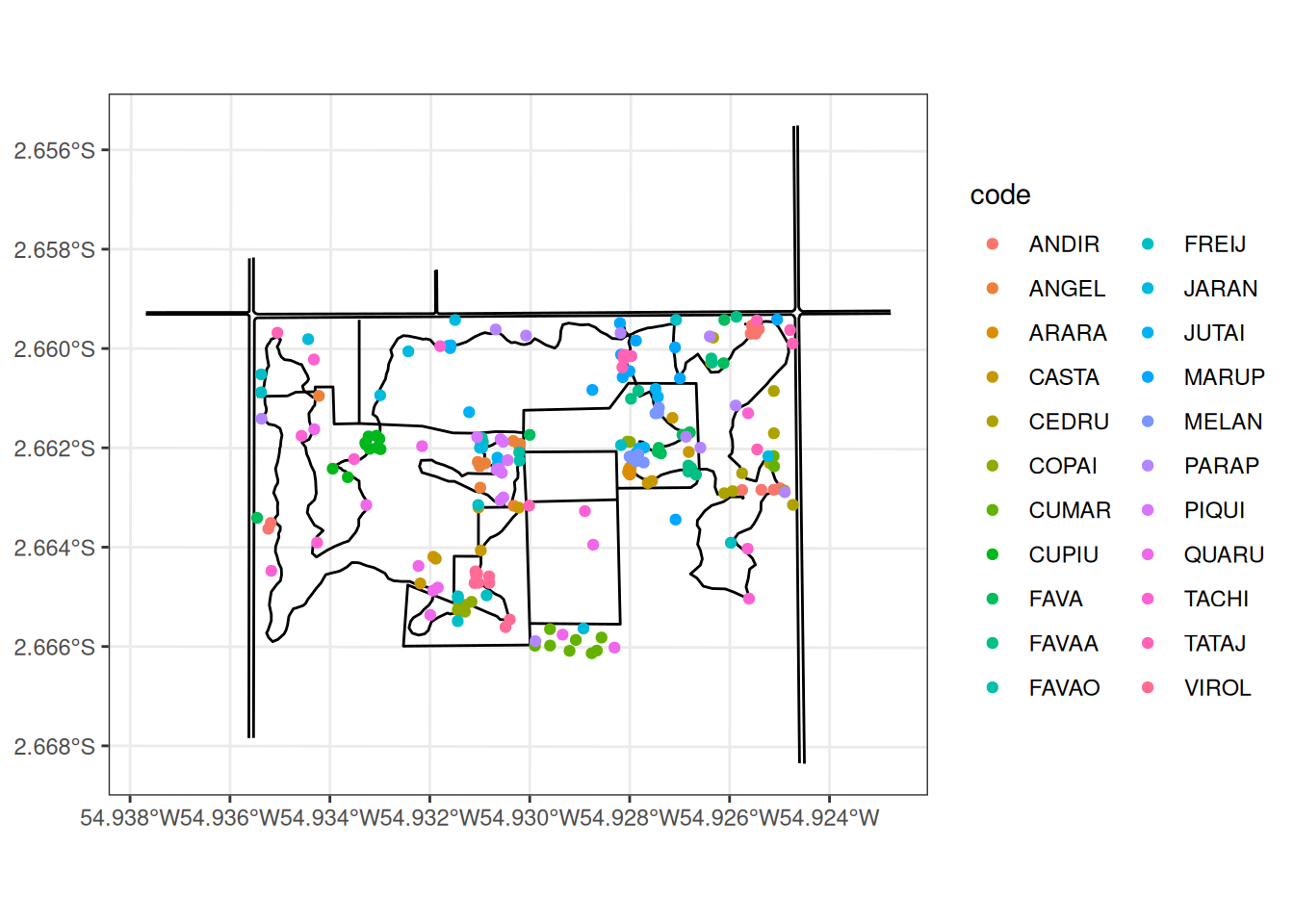We will collect the following species:
Code
forest %>%
group_by(name, code) %>%
summarise(N = n()) %>%
arrange(desc(N)) %>%
knitr::kable()
| COPAIBA |
COPAI |
11 |
| TATAJUBA |
TATAJ |
11 |
| ANDIROBA |
ANDIR |
10 |
| ANGELIM VERMELHO |
ANGEL |
10 |
| ARARAQUANGA |
ARARA |
10 |
| CASTANHA DO PARA |
CASTA |
10 |
| CEDRURANA |
CEDRU |
10 |
| CUMARU |
CUMAR |
10 |
| CUPIUBA |
CUPIU |
10 |
| FAVA |
FAVA |
10 |
| FAVA AMARGA |
FAVAA |
10 |
| FREIJO |
FREIJ |
10 |
| JUTAI |
JUTAI |
10 |
| MARUPA |
MARUP |
10 |
| MELANCIEIRA |
MELAN |
10 |
| PARAPARA |
PARAP |
10 |
| PIQUIA |
PIQUI |
10 |
| QUARUBA |
QUARU |
10 |
| TACHI BRANCO |
TACHI |
10 |
| JARANA |
JARAN |
9 |
| VIROLA CASCA DE VIDRO |
VIROL |
9 |
| FAVA ORELHA DE MACACO |
FAVAO |
6 |
We selected the 10 biggest individuals per species resulting in the following maps of individuals to be collected:
Code
ggplot() +
geom_sf(data = roads) +
geom_sf(data = path) +
geom_sf(data = inventory, aes(col = code)) +
theme_bw()
Code
g <- ggplot() +
geom_sf(data = path, col = "darkgrey") +
geom_sf(data = inventory) +
ggrepel::geom_text_repel(
data = inventory,
aes(label = label, geometry = geometry),
stat = "sf_coordinates",
size = 2, max.overlaps = 20) +
theme_bw() +
theme(axis.title = element_blank(), axis.text = element_blank(),
axis.ticks = element_blank(), axis.line = element_blank())
ggsave(g, file = "documents/map.pdf",
width = 420, height = 297, unit = 'mm', dpi = 300)
knitr::include_graphics("documents/map.pdf")
